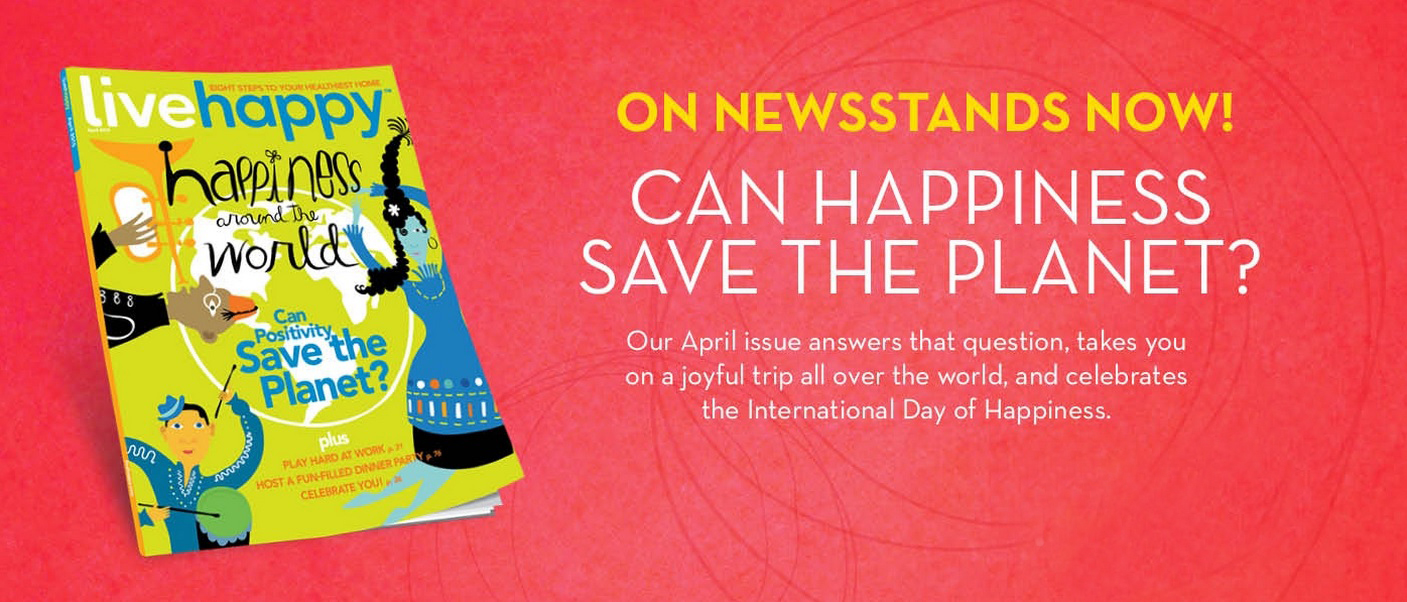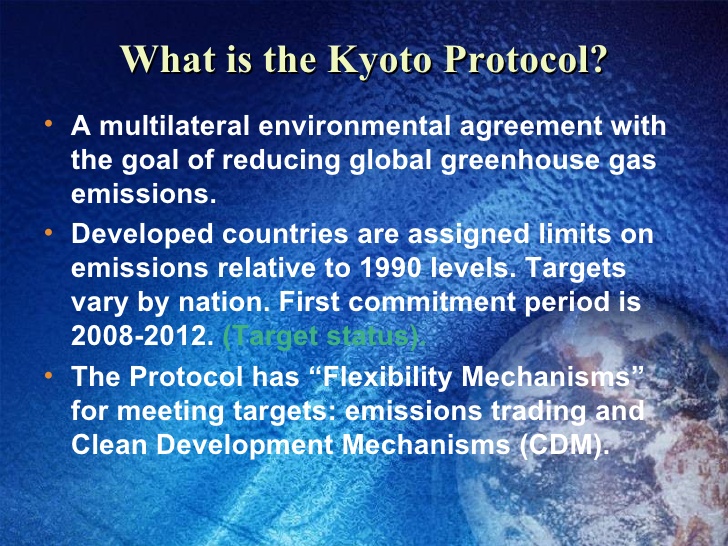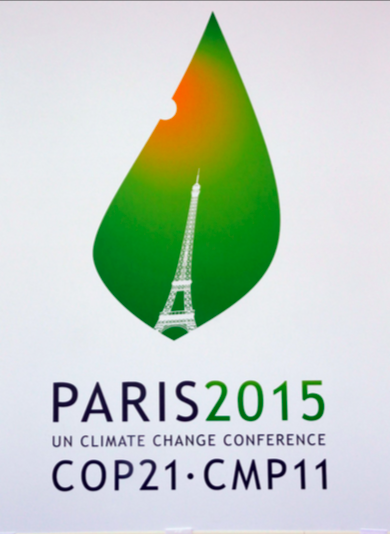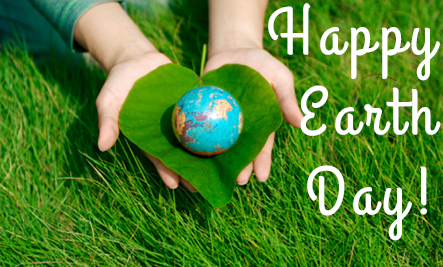
Happy Earth Day to All!
HOW EARTH DAY WAS FOUNDED AND SERVED AS A MODEL FOR THE CREATION OF THE INTERNATIONAL DAY OF HAPPINESS:
45 years ago, Earth Day founder and US Senator Gaylord Nelson launched the modern environmental movement when he created Earth Day.
Since 1970, Earth Day is celebrated today and every April 22nd.
Earth day has successfully moved environmental protection and climate change to the top of the international policy agenda, as both a top general public welfare issue, and more importantly, as essential catalyst to unlocking sustainable economic growth, improving national and international security, and ensuring not just the survival, but the very prosperity of the human species.
The Idea for Earth Day as a Platform to Raise Environmental Awareness is born in the 1960’s.
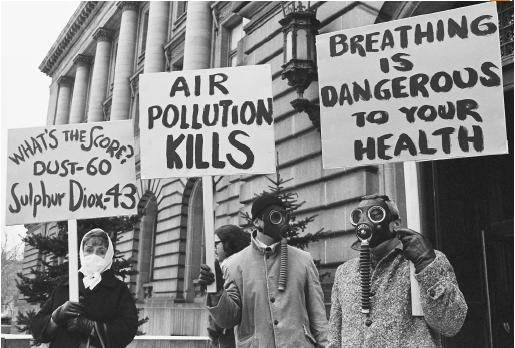
Environmental protests from the 1960’s begin to raise the issue of environmental protection and preservation as an essential public policy priority.
The idea for Earth Day started in 1962 when then US Senator Gaylord Nelson first noted environmental degradation and pollution was rampant and the environment was a non-issue in politics.
To put the environment into the political limelight “once and for all”, US Senator Gaylord Nelson flew to Washington to propose the idea of a “nationwide environmental awareness” tour to then Attorney General Robert F. Kennedy, and President John F. Kennedy. The five day, eleven state event was the origin of the idea that ultimately led to the creation the new global day of environmental awareness we all know as “Earth Day”.
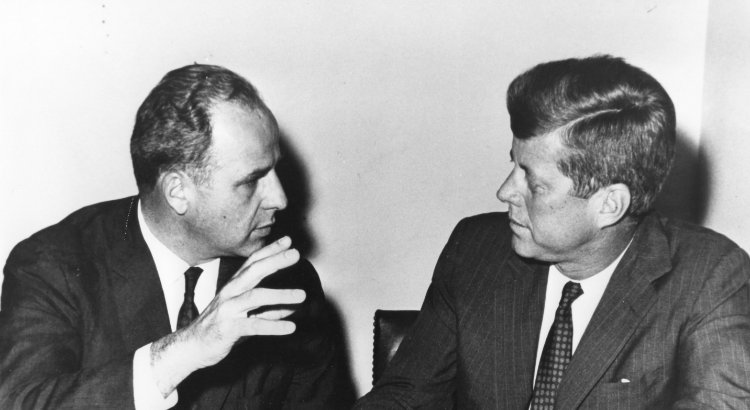
US President John F. Kennedy and US Senator Gaylord Nelson, founder of Earth Day, discuss raising public awareness about the environment in 1962.
In 1969, almost a decade later, Nelson had built up early presidential support from John F. Kennedy and spent years speaking on environmental issues across twenty-five states including California. That year a major oil spill off the coast of Santa Barbara created an environmental disaster that ignited new public outcries and passion demanding greater attention from governments to protecting the environment. Senator Nelson drew inspiration from the recent events and tapped the energy of the anti-war Vietnam protests and nationwide “teach ins” to ultimately launch the new global day, Earth Day.
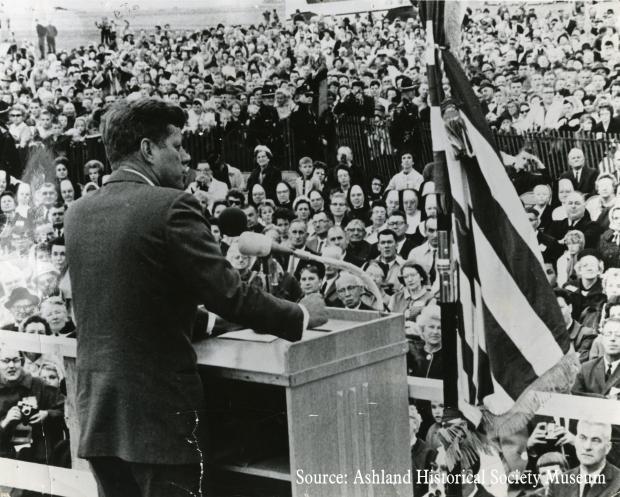
United States President John F, Kennedy with Earth Day founder US Senator Gaylord Nelson on the first ever nationwide environmental awareness tour speaking in Lake Superior, Ashland, Wisconsin, 1963.
That year, Nelson stood up at a Seattle conference and took a “big gamble that was worth a try” by announcing that there would be a nationwide grassroots demonstration on behalf of the environment. There was no turning back.
Earth Day becomes a nationwide success and global phenomenon.
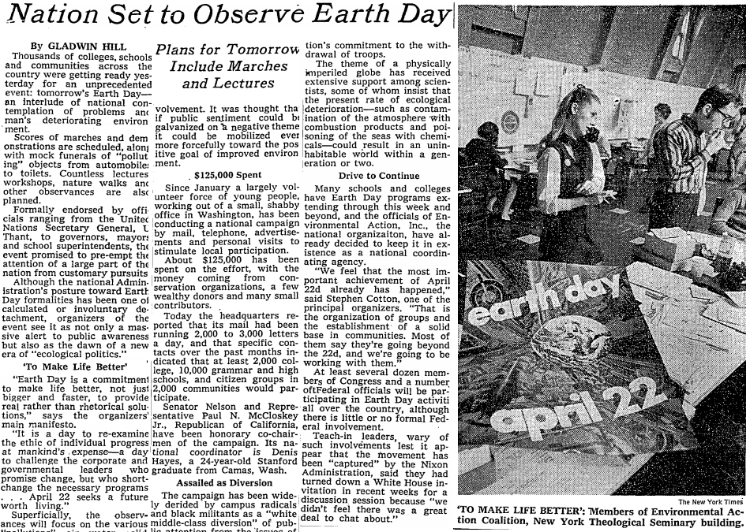
US Senator Nelson’s announcement of the first ever Earth Day was carried nationwide across major news outlets with the New York Times reporting:
“Rising concern about the environmental crisis is sweeping the nation’s campuses with an intensity that may be on its way to eclipsing student discontent over the war in Vietnam…a national day of observance of environmental problems…is being planned for next spring…when a nationwide environmental ‘teach-in’…coordinated from the office of Senator Gaylord Nelson is planned….”
Then, a few months later and the day before the first ever Earth Day, the New York Times quoted the “Earth Day organizers manifesto”:
“Earth Day is a commitment to make like better, not just bigger and faster, to provide real, rather than rhetorical solutions.
It is a day to re-examine the ethic of individual progress at mankind’s expense – a day to challenge the corporate and governmental leaders who promise change, but who short change the necessary programs. April 22 seeks a future worth living”
– New York Times, April 22, 1970
The electric response from the public and key influencers led Senator Nelson to recruit Denis Hayes as national coordinator (who went on to manage large Earth Day celebrations in 1990 and after) and Pete McCloskey, an environmentally conscious republican congressional representative.
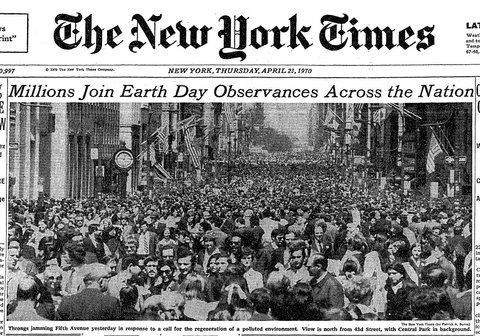
With a staff of just 85 people, they rallied over 20 million people to celebrate the first ever “Earth Day” with marches and events. Nelson later explained that:
“Earth Day worked because of the spontaneous response at the grassroots level…the remarkable thing about Earth Day. It organized itself.” – Earth Day founder and US Senator Gaylord Nelson
Earth Day changes how we all live, our values, and promotes sustainable solutions to environmental issues and climate change.
After the first Earth Day, President Richard Nixon established the Environmental Protection Agency with an executive order in late 1970. US Congress then passed the Clean Air Act, 1972 amendments to the Clean Water Act, the 1973 Endangered Species Act, and the Safe Drinking Water Act of 1974 among other environmental protection laws throughout the decade.
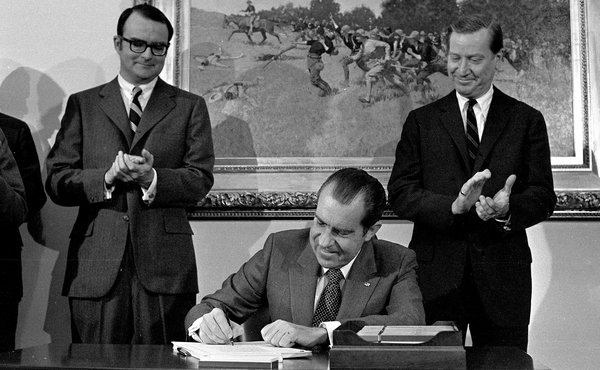
United States President Richard Nixon signs the Clean Air Act in 1970 following nationwide public outcry initiated by Earth Day founder, US Senator Gaylord Nelson, for the government to pay attention to environmental protection.
By 1990, Earth Day went global, and 200 million people in 141 countries and major celebrations in Washington, DC.
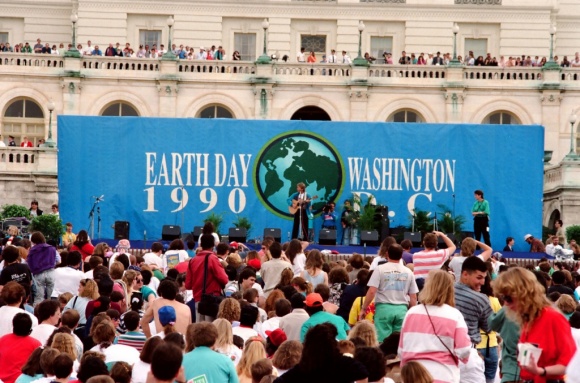
Earth Day celebrations in Washington DC, 1990. 200 Million people celebrated across 141 countries.
Thanks to Earth Day founder Senator Nelson, in 1992 the first ever global conference on the environment took place in Rio Brazil, and again 20 years later in 2012 now called the “United Nations Conference on Sustainable Development Rio+20.”
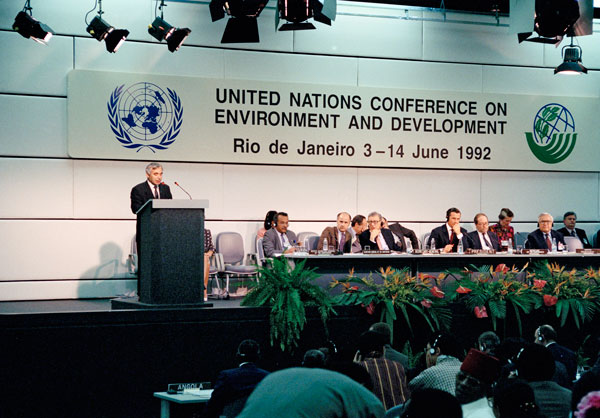
1992 “Earth Summit” United Nations Conference on Environment and Development held following decades of public awareness raising leadership by Earth Day founder Nelson.
In 1997 World leaders meet for the Kyoto conference where they acknowledged for the first time the scientific fact that
“the leading cause of global warming is carbon emissions from fossil-fuel consumption, and that something must be done to address those rising emissions.”
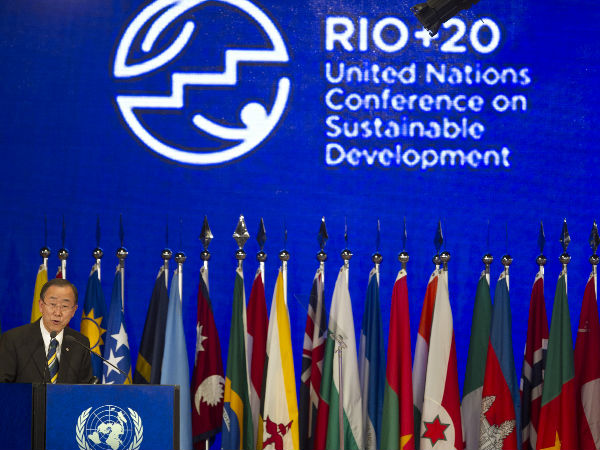
United Nations Secretary General Ban Ki moon speaks at the 2012 United Nations “Rio+20” Earth summit and Conference on Sustainable Development with over 130 heads of state and representatives from 181 countries.
In 2014, over 400,000 people marched in New York ahead of the 69th UN General Assembly thanks to Nelson’s 1969 initiative which created Earth Day.
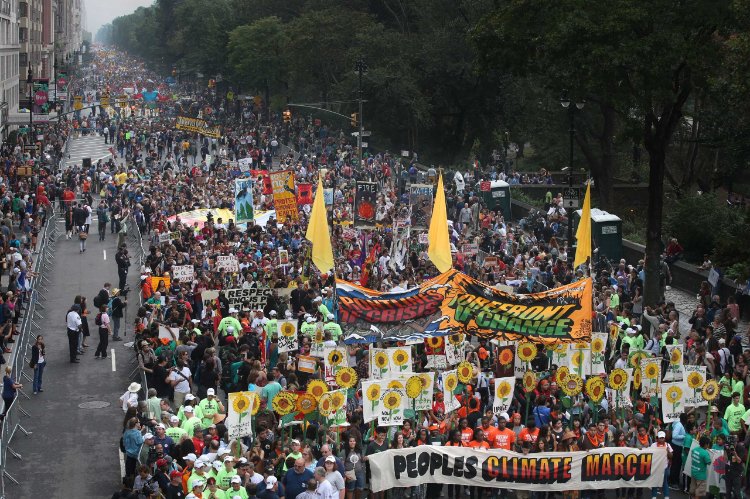
Over 400,000 people march during “Climate Week” in New York ahead of the UN General Assembly meetings in September 2014.
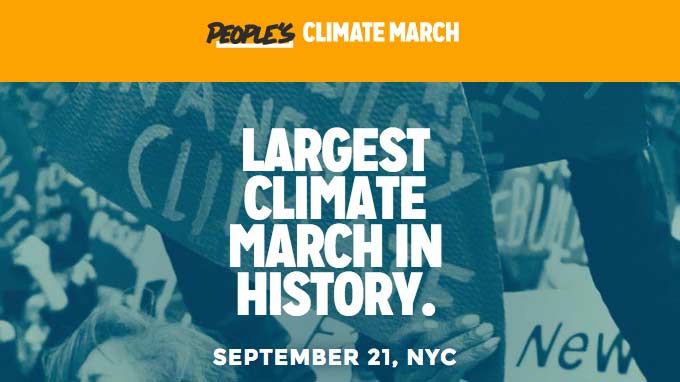
And this year, 2015, Global Citizen held a major concert in Washington DC with United Nations Secretary General Ban Ki moon delivering a special message on Climate Change:
“You have the power. Your generation can make it happen. Be a global citizen. Take your passion and compassion and build a better, sustainable world and, together, let’s make our global goals a global reality.” – United Nations Secretary General Ban Ki moon
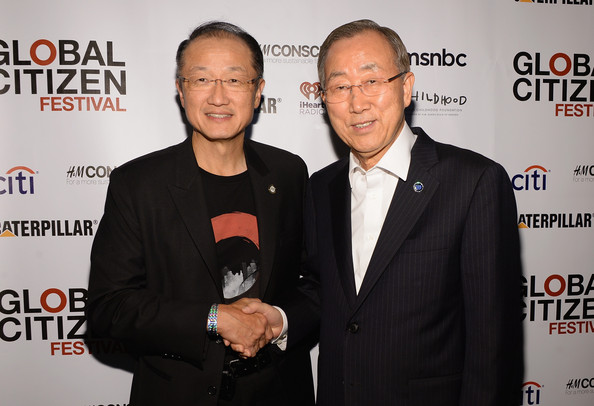
United Nations Secretary General Ban Ki moon and World Bank President Jim Yong Kim at Earth Day celebrations in Washington DC hosted by Global Citizen festival, April 2015.
Nelson transforms our world and becomes a national hero for creating Earth Day 45 years ago.
Today, thanks to Nelson, the Earth Day founder and architect, and his team, the issue of environmental protection and the health of our planet are woven into our daily subconscious lives as well as our economy and government policies.
Over four decades later, all of us who grew up with earth day can credit it with raising our own individual understanding, and appreciation for the importance of preserving and protecting our natural environment.
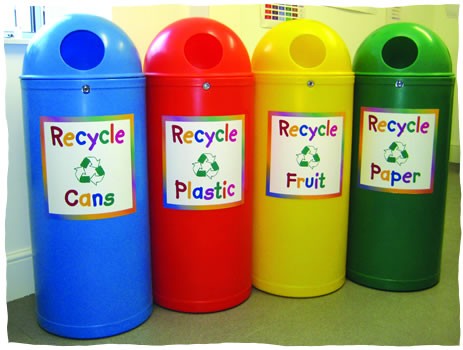
Modern recycling bins for children illustrate how recycling is part of everyday existence around the world thanks to Earth Day founder United States Senator Gaylord Nelson.
Thanks to US Senator Nelson and Earth Day, we have all developed a subconscious environmental intuition, We all pay attention to our “environmental footprint”. Environmental pollution is widely seen as a public health issue as well as an economic and security issue.
Earth day has served to enlighten all of us about the countless ways we can interact with our natural environment and protect our planet on a local every day level, nationally, and internationally.
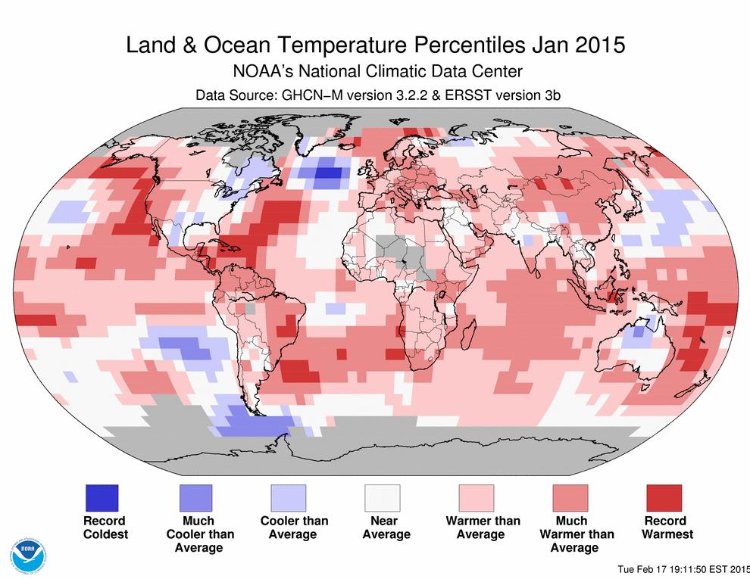
Even More, environmental awareness has now elevated to a new understanding of the issue of global sustainability and the connection between our planet’s health and our economic growth and national and international security and our collective fate of humanity. For the first time, the US Department of Defense mentioned “climate change” as one of the top security threats facing the United States and the world in its Quadrennial Defense Review and Climate Change Adaptation Road Map.
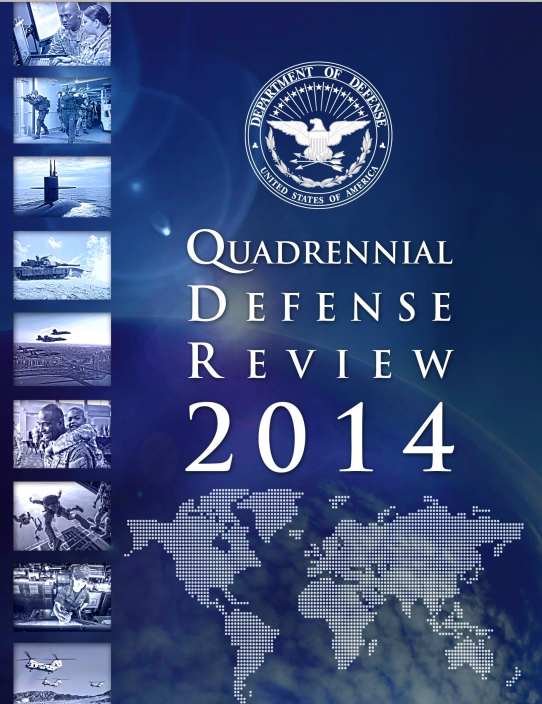
From the 2014 United States Department of Defense Quadrennial Review. TheQuadrennial Defense Review (QDR) is a study by the United States Department of Defense that analyzes strategic objectives and potential military threats. TheQuadrennial Defense Review Report is the main public document describing the United States’s military doctrine:
“Climate change poses another significant challenge for the United States and the world at large. As greenhouse gas emissions increase, sea levels are rising, average global temperatures are increasing, and severe weather patterns are accelerating. These changes, coupled with other global dynamics, including growing, urbanizing, more affluent populations, and substantial economic growth in India, China, Brazil, and other nations, will devastate homes, land, and infrastructure. Climate change may exacerbate water scarcity and lead to sharp increases in food costs. The pressures caused by climate change will influence resource competition while placing additional burdens on economies, societies, and governance institutions around the world. These effects are threat multipliers that will aggravate stressors abroad such as poverty, environmental degradation, political instability, and social tensions – conditions that can enable terrorist activity and other forms of violence. “
Moreover, the United States Department of Defense Climate Change Adaptation Road Map was created specifically in order to address security challenges that are projected to arise as a result of climate change and environmental challenges.
Thats right. Thanks to US Senator Gaylord Nelson, who came up with an idea to observe what began as a “conservation” and “environmental” issue and is now a social, economic, environmental, security, and health based human progress issue with a day called Earth Day, and who is responsible for igniting the spark of activism and annual celebration and awareness about environmental challenges can also be credited with, over 40 years later, the greater official attention paid to climate driven security threats by the United States Department of Defense.
Gaylord’s initiative and leadership has implications for not just climate change and environmental issues in general, but national and international security, peacekeeping, disaster relief, and US and Global spending on military and security challenges at a time when, over 4 decades later, the nexus and interconnectedness of all issues is becoming increasingly apparent and widely recognized by all. Thanks Earth Day founder and US Senator Gaylord!
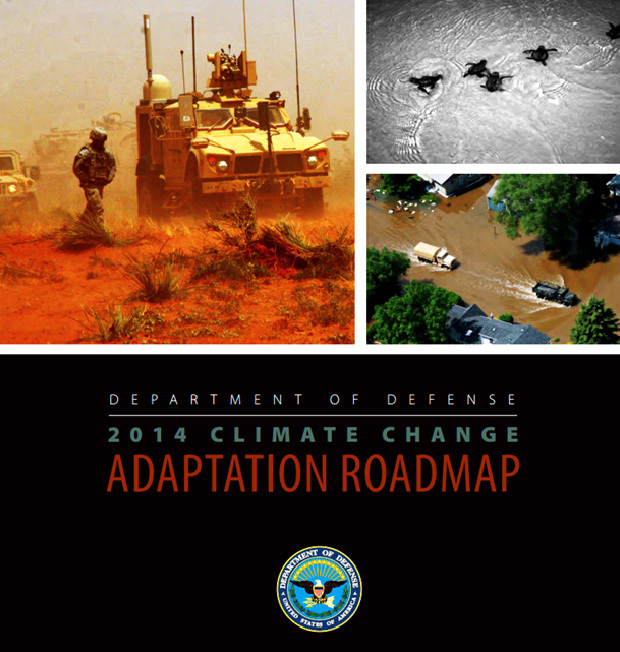
In its Climate Change Adaptation Road Map, the United States Department of begins with a statement on the future of climate driven threats:
“Among the future trends that will impact our national security is climate change. Rising global temperatures, changing precipitation patterns, climbing sea levels, and more extreme weather events will intensify the challenges of global instability, hunger, poverty, and conflict. They will likely lead to food and water shortages, pandemic disease, disputes over refugees and resources, and destruction by natural disasters in regions across the globe. In our defense strategy, we refer to climate change as a “threat multiplier” because it has the potential to exacerbate many of the challenges we are dealing with today – from infectious disease to terrorism. We are already beginning to see some of these impacts. A changing climate will have real impacts on our military and the way it executes its missions. The military could be called upon more often to support civil authorities, and provide humanitarian assistance and disaster relief in the face of more frequent and more intense natural disasters. Our coastal installations are vulnerable to rising sea levels and increased flooding, while droughts, wildfires, and more extreme temperatures could threaten many of our training activities. Our supply chains could be impacted, and we will need to ensure our critical equipment works under more extreme weather conditions. Weather has always affected military operations, and as the climate changes, the way we execute operations may be altered or constrained. While scientists are converging toward consensus on future climate projections, uncertainty remains. But this cannot be an excuse for delaying action. Every day, our military deals with global uncertainty. Our planners know that, as military strategist Carl von Clausewitz wrote, “all action must, to a certain extent, be planned in a mere twilight.” It is in this context that DoD is releasing a Climate Change Adaptation Roadmap. Climate change is a long-term trend, but with wise planning and risk mitigation now, we can reduce adverse impacts downrange.”
Internationally, this 45th Earth day anniversary coincides quite appropriately with this year’s premiere global governance international events:
The United Nations 70th General Assembly and anniversary.
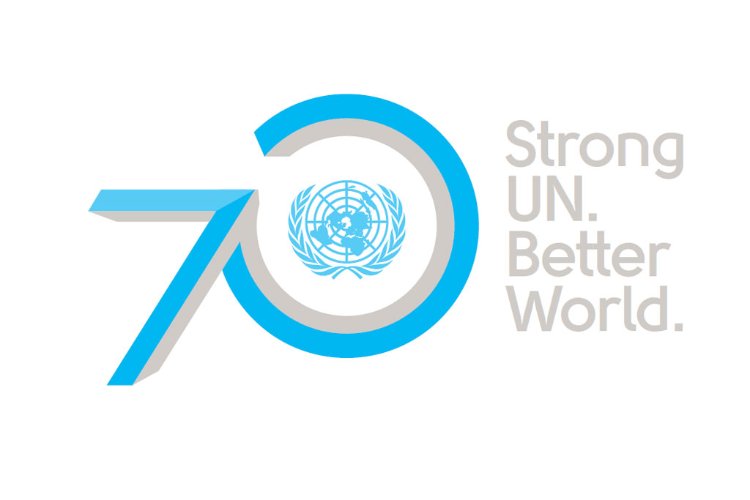
In September 2015, heads of state and global leaders will meet in New York to decide the Post 2015 Sustainable Development agenda and launch what Dr. Jeffrey Sachs, Earth Institute Director, and Special Adviser to Secretary General Ban Ki moon calls “The Age of Sustainable Development.”
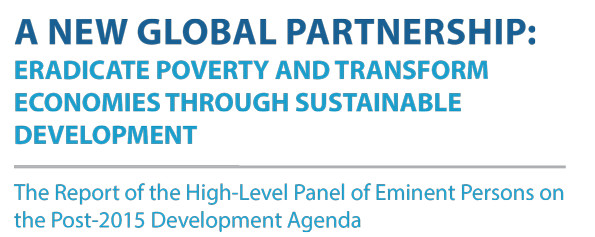
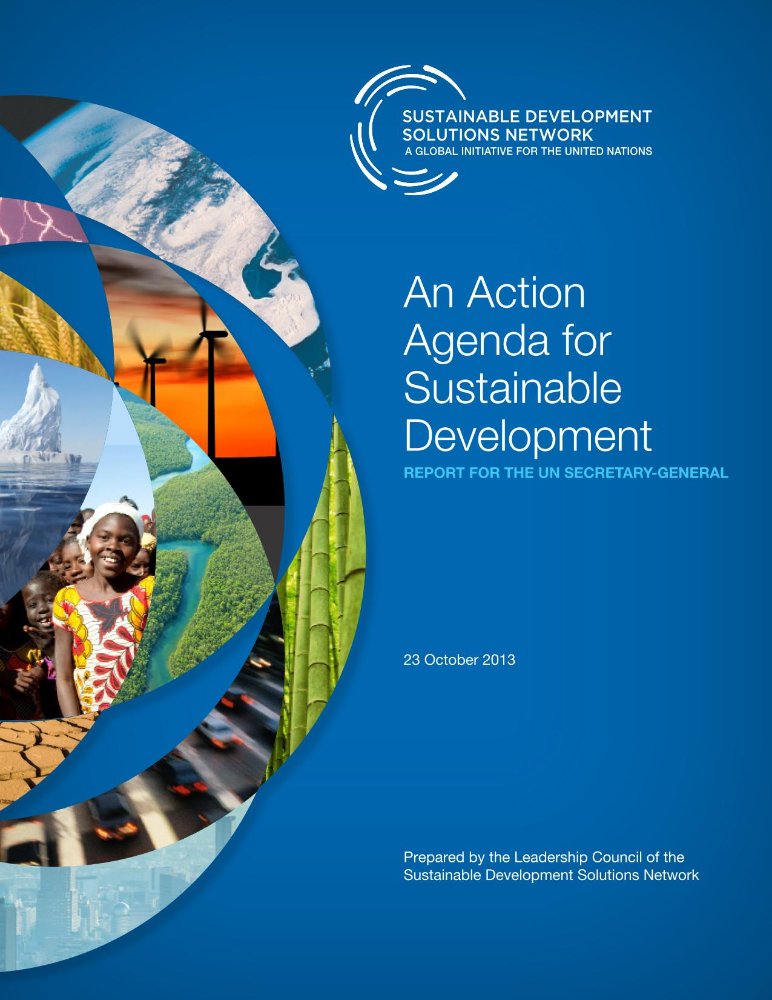
Additionally there are major global conferences on Climate Change in Paris and Financing For Development, in Addis Ababa, Ethiopia which will shape the next 15 years of development and environmental protection for our planet and for humanity.
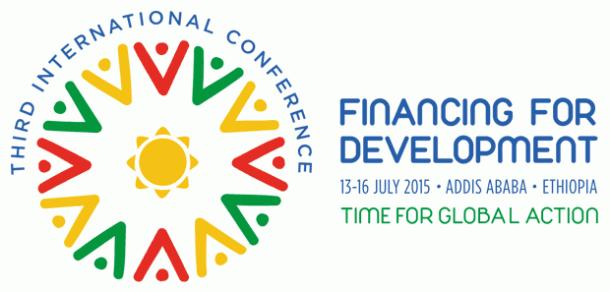
This is the highest honor given to civilians in the United States.
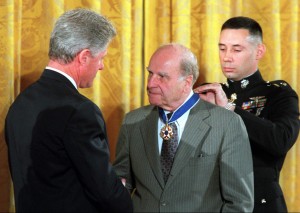
In 1995, United States President Bill Clinton awards the Presidential Medal of Freedom to former US Senator Gaylord Nelson for founding Earth Day.
How Earth Day served as a Model for the idea and creation of the International Day of Happiness
In 2011, my company, Illien Global Public Benefit Corporation, whose mission for over thirty three years is to promote happiness for all, borrowed several chapters right out of Senator Nelson’s Earth Day strategy playbook in order to raise human happiness to the top of the international policy agenda, forever.
Like Nelson, my appreciation for and dedication to advancing human happiness developed over many years. My company, Illien Global, got its start in happiness over thirty three years ago in 1982 when one of our first social impact nonprofits, Illien Adoptions International, began creating happiness for orphaned and abandoned children by finding them permanent new loving families.
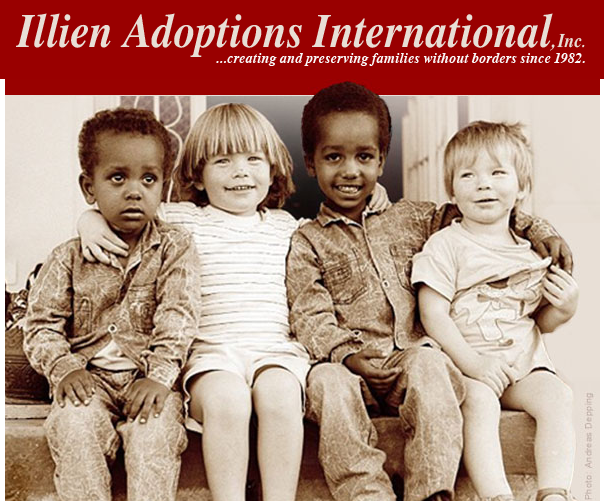
Illien Adoptions International homepage founded in 1982.
Happiness is a fundamental human right and goal.
As the first to be adopted into Illien, for decades, I have had the privilege of traveling all over the world to visit orphanages and bare firsthand witness to the misery of children abandoned to the streets, to slums, and to orphanages, children just like me.
The experience of constantly leaving these cute lil’ guys and gals behind, trapped in orphanages and a vicious cycle of poverty, lack of love and family, and overall unhappiness, while I return to my life of plenty – of freedom, human rights, amazing friends and family, and access to education, opportunity and all of life’s experiences, has left me resolved and committed to finding both immediate and systemic solutions to the root causes of the unhappiness for all orphans and by definition, to human happiness in general.

Chairman, President, and CEO of Illien Global Jayme Illien visiting an orphanage in Calcutta, India.
In 2006-2007, I launched our foundation, the Illien Foundation for Children to bring happiness to the children who don’t have the opportunity to experience happiness from being adopted by new parents, through projects in education, health, women, infrastructure, and economic development.
In 2007, realizing that no amount of money or projects would bring happiness to all orphans, we launched a secondary mission to “seek out and find new models and means to reduce poverty, empower youth, and create opportunities and happiness for vulnerable children worldwide.”
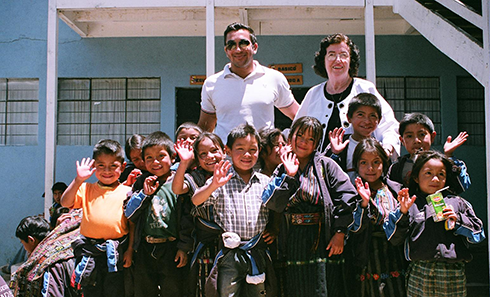
Jayme Illien Chairman, President, and CEO of Illien Global and Executive Director of Illien Adoptions International, Ms Anna Belle Illien with children in Gautemala.
Then in 2011, through a twist of fate and serendipity, while working on region-wide economic development and infrastructure initiatives with governments and multinationals in Africa and Asia, we encountered the global movement initiated at the United Nations by the Kingdom of Bhutan, who measures Gross National Happiness (as opposed to GDP), to get countries to measure happiness in addition to income or economic output.
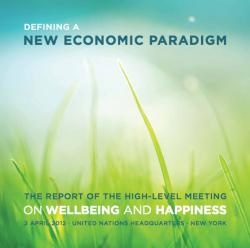
Happiness and Wellbeing: Defining a New Economic Paradigm is exactly the “new economic model” we had been searching for for decades as we struggled with the question of how to bring more happiness to orphaned and abandoned children, and to all people.
Happiness is a New Economic Model for Unlocking Sustainable Economic Development
Thanks to the leadership of Prime minister Jigme Thinley, and Ambassador to the United Nations, Lhatu Wangchuk, The Kingdom of Bhutan had successfully campaigned to get UN Resolution 65/309 “Happiness: Towards a Holistic Approach to Development” adopted.
This first “happiness resolution” UN 65/309 is the first ever to recognize that
“The gross domestic product indicator by nature was not designed to and does not adequately reflect the happiness and well-being of people in a country”.
UN Resolution 65/309 also calls on member states,
“To pursue the elaboration of additional measures that better capture the importance of the pursuit of happiness and well-being in development with a view to guiding their public policies.”
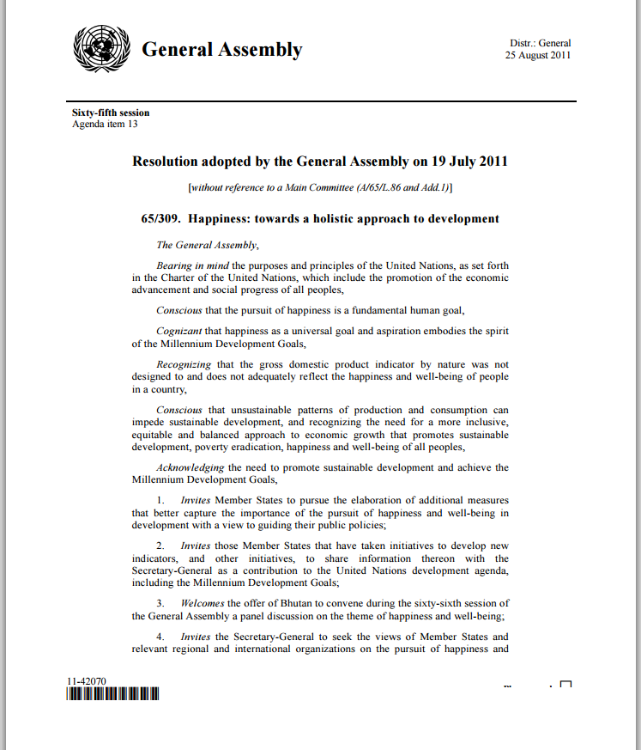

“Happiness Day” is finally created thanks to “Earth Day’s initiative and inspiration!
In order to create the international day of happiness, we followed Nelson’s method of reaching out to the White House, except on an international level and approached the United Nations.
We met with Ambassadors from all over the world, and United Nations Secretary General Ban Ki moon who provided a special endorsement.
We then drafted the resolution, and lobbied every country and senior UN decision makers to get support. UN Resolution 66/281 was finally adopted by consensus of all 193 countries on June 28, 2012, creating the International Day of Happiness.
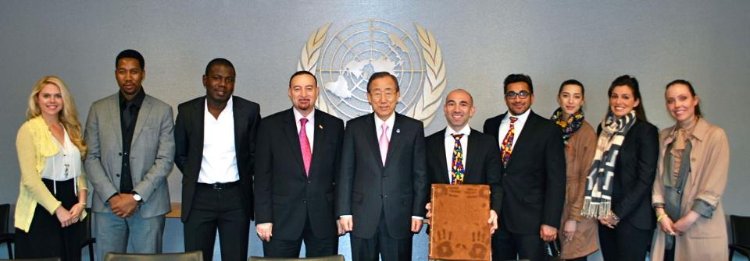
United Nations Secretary General endorses the International Day of Happiness in 2012.
At the first High Level Meeting on Happiness and Wellbeing held at United Nations headquarters in 2012, United Nations Secretary General Ban Ki moon said,
“We need a new economic paradigm that recognizes the parity between the three pillars of sustainable development. Social, economic and environmental well-being are indivisible. Together they define gross global happiness.”
Happiness Day becomes a Global Phenomenon in just 3 years
The first Happiness Week and International Day of Happiness was launched with Chelsea Clinton and Ndaba Mandela at TedXTeen in New York. Other celebrations included the first Economics of Happiness conference in held in Australia, and major social campaigns from organizations like Action for Happiness based in the UK, and a special message from Secretary General Ban Ki moon.
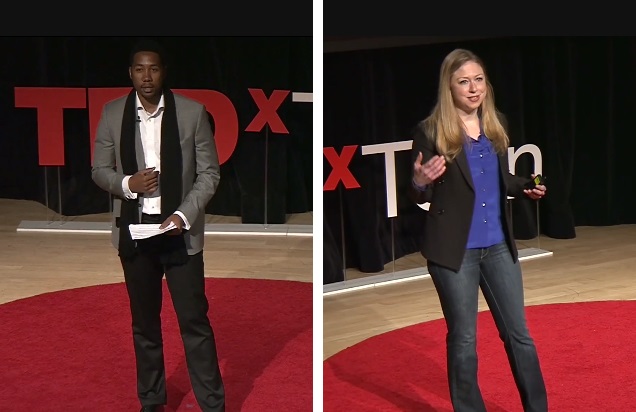
Ndaba Mandela and Chelsea Clinton launch the first ever Happiness Week and International Day of Happiness at TedXTeen in New York, March 2012.
For the Second International Day of Happiness, Pharrell and The United Nations Foundation teamed up to launch www.24hoursofhappy.com, a global campaign to the hit song “Happy” asking viewers to submit videos of them dancing to the song.
What is amazing about this campaign is that youth as far as Yemen and Iran were inspired to create videos asking governments to measure happiness in their public policies. They even went to prison for dancing and celebrating happiness in a music video – exactly the type of grassroots initiative and leadership we sought to ignite in creating the International Day of Happiness.
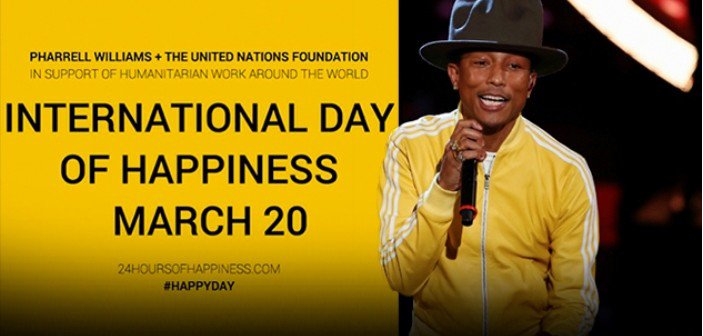
In 2014, United Nations Foundation and Pharrell partner for the 2nd International Day of Happiness in global campaign to raise awareness about happiness as a public policy objective and fundamental human right.
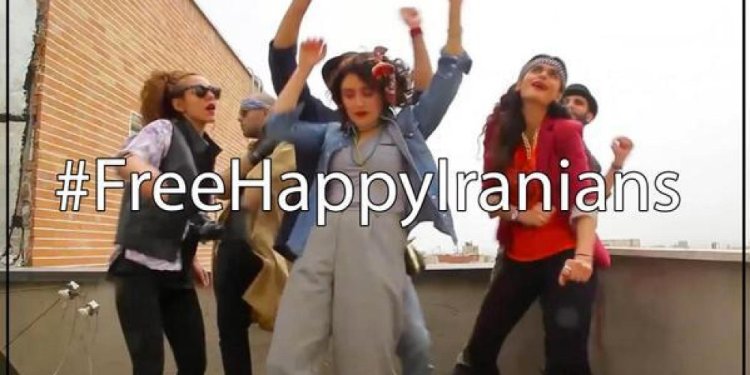
Happy Students from Iran make a music video inspired by Pharrell and the UN Foundation’s campaign and are put in jail for dancing and being happy.

Then, in 2015 makes another International Day of Happiness appearance and gives speech at United Nations General Assembly where he makes an announcement to all:
“Protecting our planet is fundamental to the pursuit of human happiness…We only have one home and there’s climate change… If you don’t (take) care of your home, you don’t have a life, and we have to transition from climate change to climate action.” – Pharrell Williams at United Nations speech 2015
One of my favorite International Day of Happiness creations launched in the 2nd year was this United Nations stamp series now available at the UN gift store and online.
 This most recent third international day of happiness was a mega success elevating happiness awareness as a fundamental human right and goal and as public policy objective into the mainstream.
This most recent third international day of happiness was a mega success elevating happiness awareness as a fundamental human right and goal and as public policy objective into the mainstream.
United Nations and United Nations Foundation launched its #HappySoundsLike campaign to create the “World’s Happiest Playlist” with support and performances, which included famous names like Ed Sheeran, James Blunt, David Guetta, John Legend, Cody Simpson, Charlize Theron, Stevie Wonder, AR Rahman and Pharrell.

Google changed their home page which showed “International Day of Happiness” under the search bar. This was one of my favorite aspects of the 2015 third International Day of Happiness.
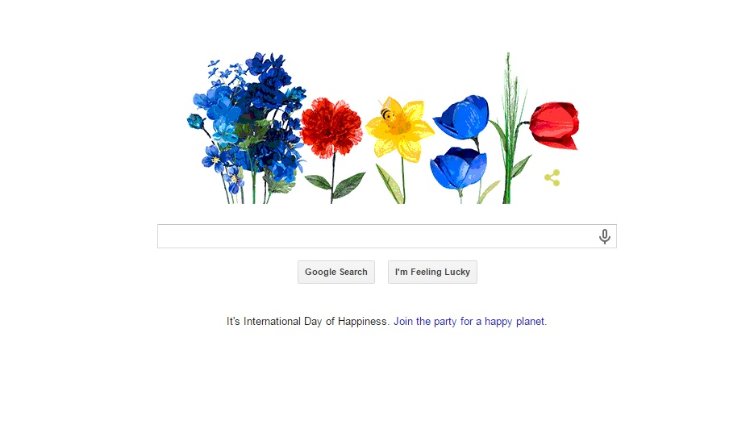
Google and Pharrell also launched a campaign which took over user’s computer screens on Google Hangouts. This was absolutely fantastic and in the spirit of the original intention when we created the new International Day of Happiness.

There is a saying that money cannot buy happiness. What is for sure is no amount of money could gain the type of exposure which organically reached well over 300 million people thanks to the power of Social Media (an advantage Nelson did not have when creating Earth Day) and the initiative and leadership of grassroots organizers, social change organizations, and everyday people rising up to assert their fundamental right to happiness.
International Day of Happiness and the Future of Happiness:
On this Earth Day, as we take a moment to celebrate and remember the importance of environmental protection and sustainability to our collective economic wellbeing, national and international security, and the survival of humanity and our planet, we also make sure to say
THANK YOU EARTH DAY FOUNDER US SENATOR GAYLORD NELSON FOR YOUR INITIATIVE, LEADERSHIP, AND SERVICE TO HUMANITY!
Gaylord’s inspiration provided the “earth day model” which ultimately led to the creation of the international day of happiness, and the elevation of happiness as a fundamental human right and goal, and as a new economic development paradigm to the top of the international agenda, and top priority in public policy, in perpetuity.
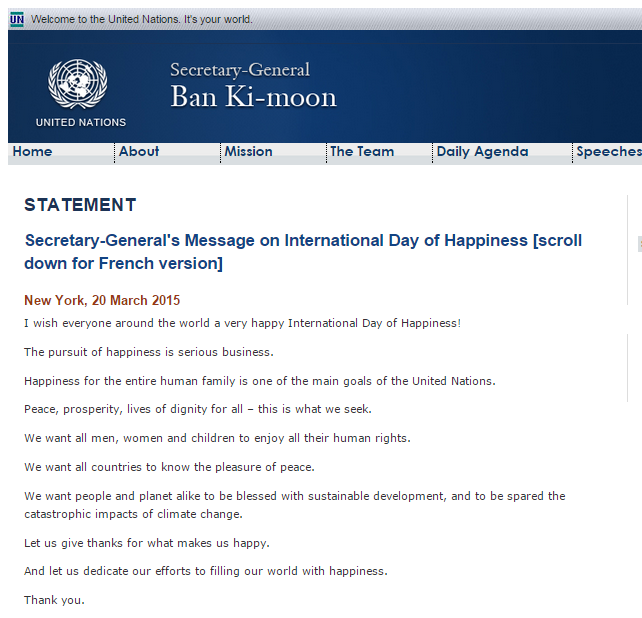
In 45 years, the year will be 2057. I very much look forward to the prospect of one day seeing how happiness day might have played a role in encouraging people to do whatever makes them happy, and to promote policies from their governments which support individual, community, and international happiness.
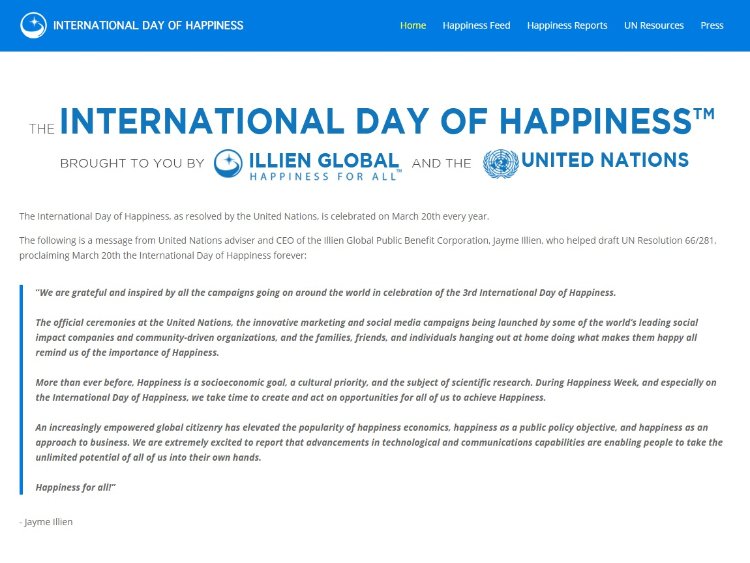
For more information about the International Day of Happiness, please visit www.happinessday.org and/or http://www.un.org/en/events/happinessday/ and www.illienglobal.com
Happiness for all!
Jayme Illien is founder of the International Day of Happiness and Chairman, President and Chief Executive Officer of Illien Global Public Benefit Corporation whose mission is happiness for all. Jayme is a policy adviser with the United Nations and represents Nobel Laureates, some of the world’s top economists, and former high level and head of state level members of US and foreign governments on international economics, peace, security, and happiness.

